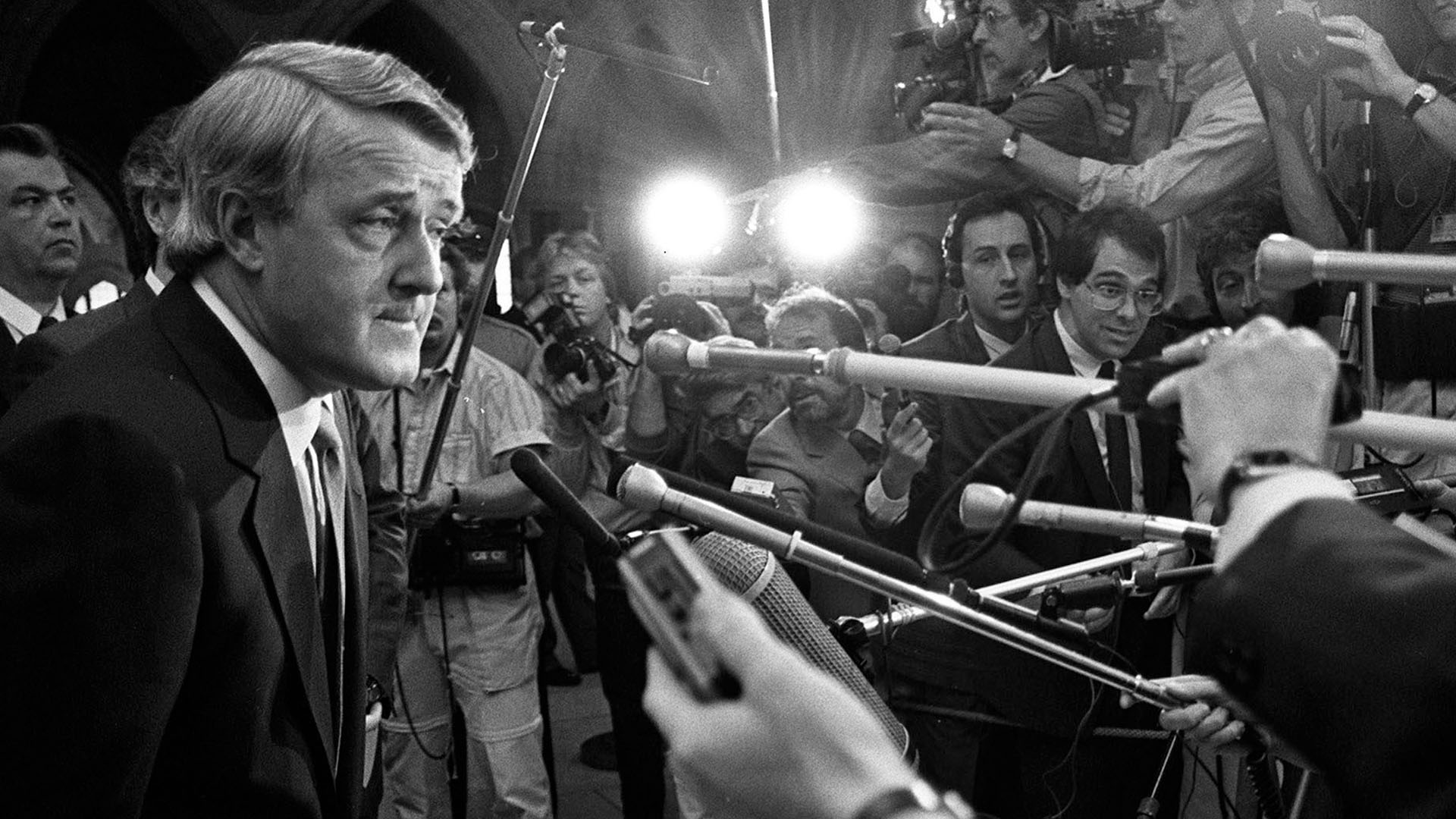
(Version française disponible ici)
OTTAWA – Brian Mulroney was elected prime minister promising to give public servants “pink slips and running shoes.” He didn’t follow through on that, but his reforms laid the groundwork for the largest downsizing of the federal workforce in Canada’s history and redefined the role of government.
“Politicians respond to the public, but good leaders affect the public’s understanding of public-policy issues,” said Mel Cappe, a former clerk of the Privy Council, in remembering Mulroney, who died on Feb. 29.
“That’s what Mulroney did with the GST, apartheid, acid rain and fiscal issues. He created the public’s demand for fiscal responsibility that the Chrétien government then took advantage of.”
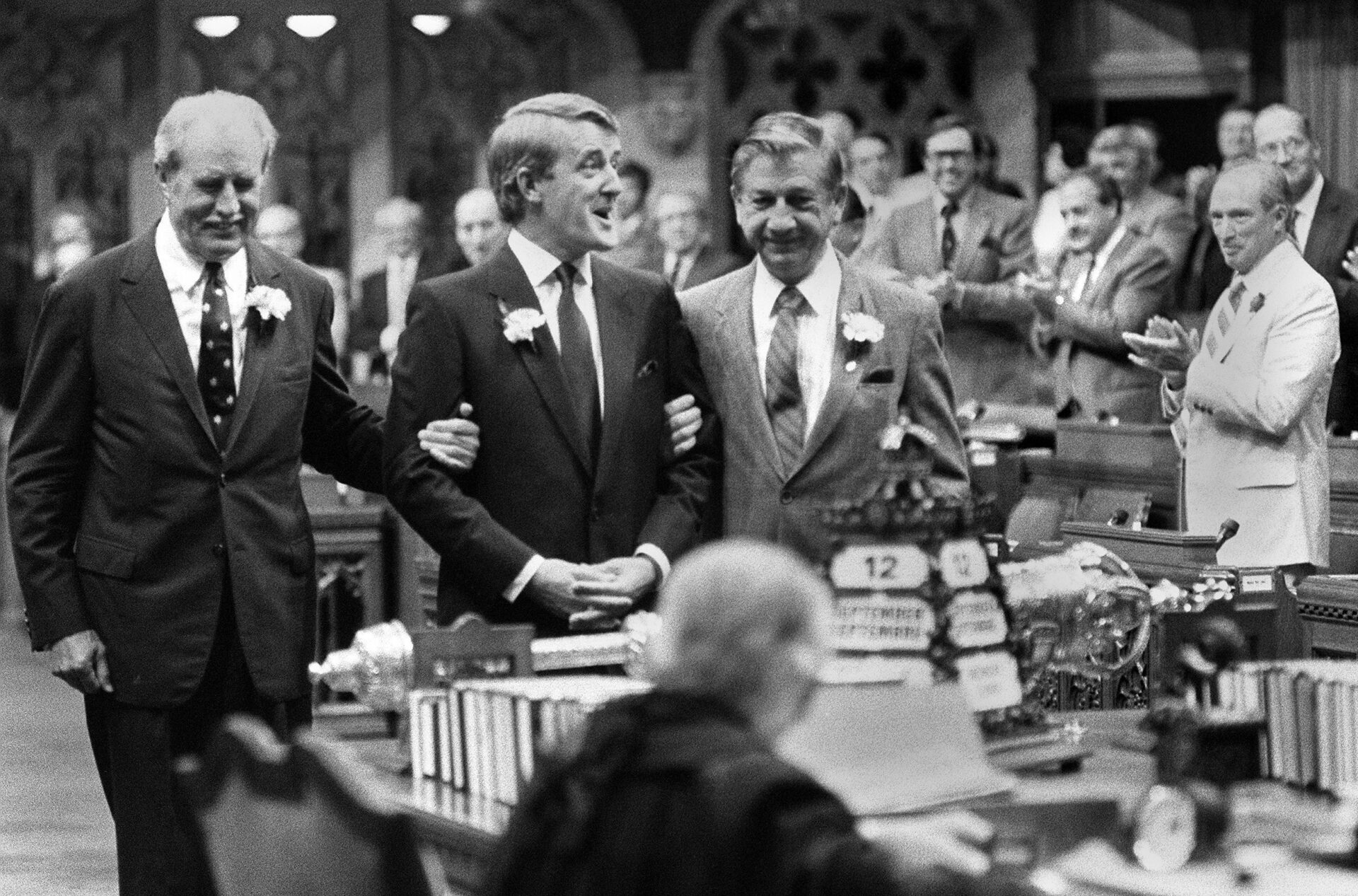
Respect for the public service
In 1993, Canada’s debt stood at 67 per cent of GDP, eating 35 per cent of revenues. Through a program review, spending was slashed, 55,000 jobs cut, and the deficit eliminated within three years. Canada enjoyed annual surpluses until 2007-2008.
Mulroney didn’t make the tough decisions to get out of programs like former Liberal finance minister Paul Martin did later, but senior officials say he changed public opinion about debt and deficits.
They also say Mulroney brought an affability, civility and respect for the public service missing in today’s divisive and highly partisan politics.
This week, Mulroney’s casket is lying in state in Ottawa, where the public can pay its respects. From there, it moves to Montreal’s Saint Patrick’s Basilica for public visitation and a state funeral on Saturday at Notre-Dame Basilica.
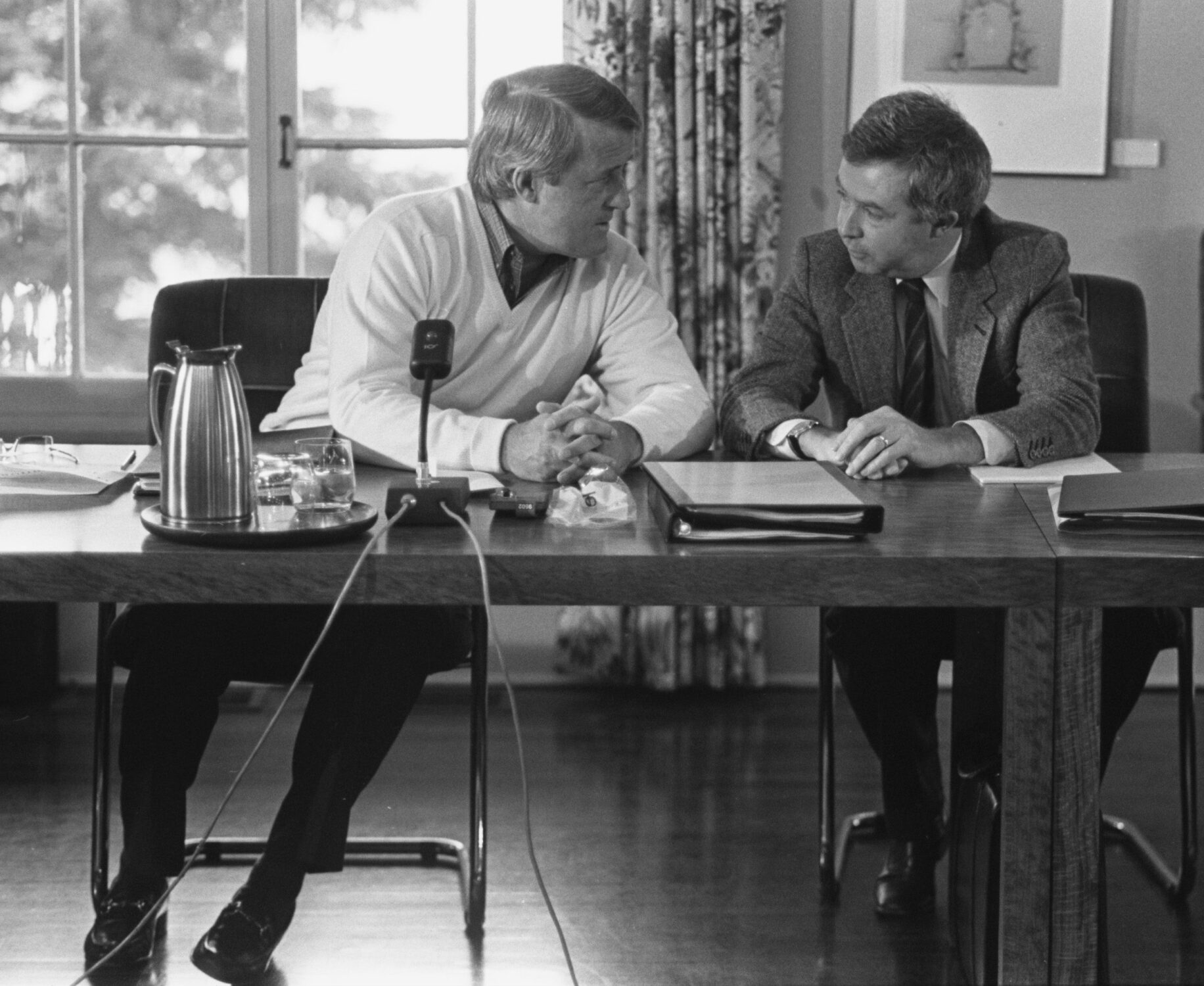
“He was a real prime minister who listened to advice,” said Jim Mitchell, a former senior official in the Privy Council Office. “He didn’t see bureaucrats as just there to salute, implement, or administer. No. He thought the public service had its job in support of his government, and he trusted it.”
But that respect didn’t come easily at first.
Mulroney’s iconic “pink slips and running shoes” comment epitomized his distrust of public servants and a resolve to restrain spending. It began an era of bureaucrat bashing with public servants labelled as “fat cats” and Ottawa dubbed “fat city.”
“We’re not going to be bamboozled by a bunch of self-centred, boggy-brained public servants who are skilled at manipulating cabinet ministers like marionettes,” Mulroney said in 1983, when he was running for the Conservative leadership before winning his first majority in 1984.
“We’re going to give them each a budget and orders to live within, something they’ve never dreamed about, much less done. And when they can’t deliver, they’ll be given their pink slip and a pair of running shoes.”
Canada’s finances were in dire straits the early 1980s, grappling with a recession, high employment and ballooning deficit after years of Liberal deficit spending.
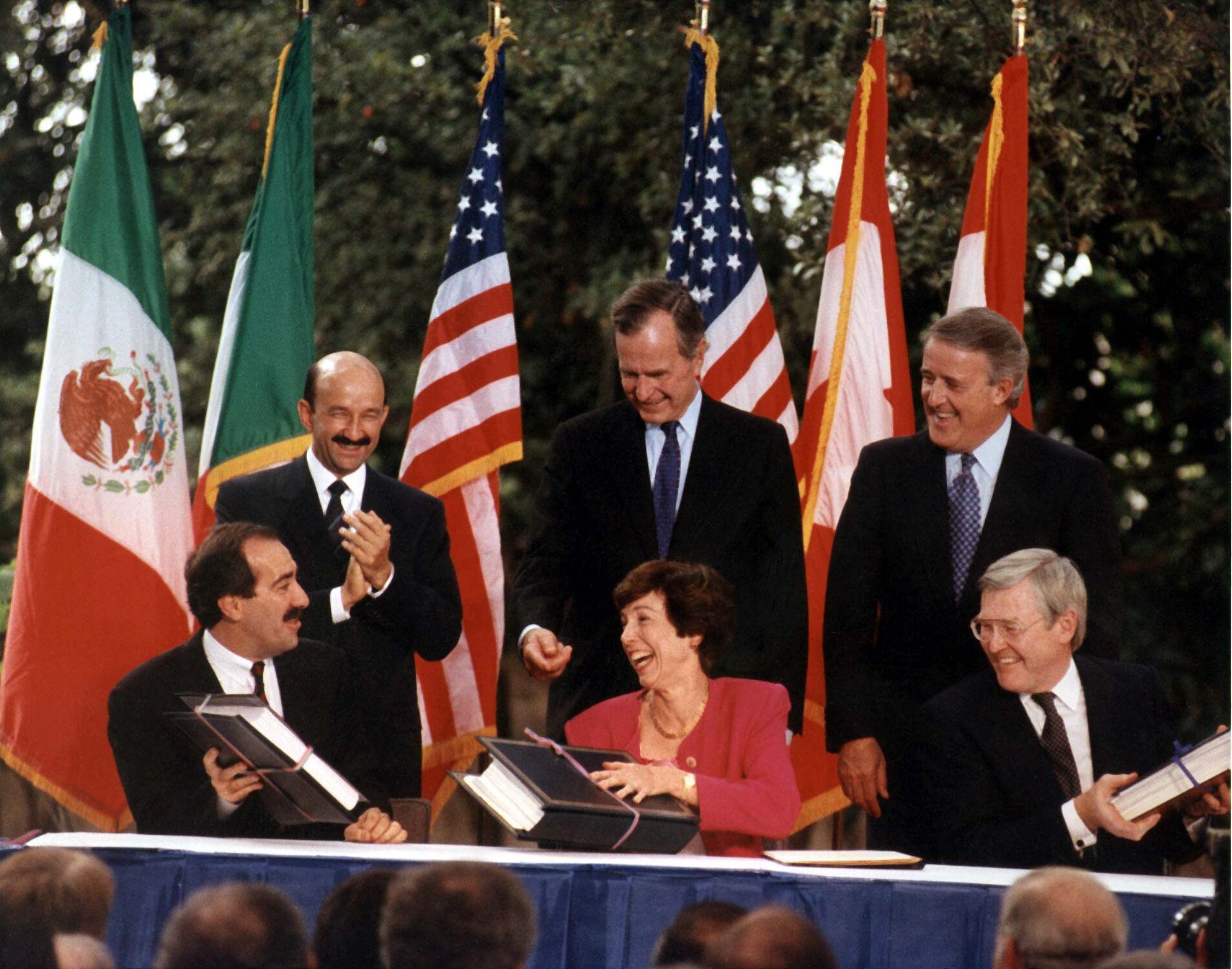
The deficit just kept growing
Mulroney came in when new public management, the philosophy of making government run more like business, was all the rage with big reforms in New Zealand, Australia and the U.K. (Mulroney moved in the same direction to modernize the public service but not with the speed and intensity.)
He introduced major economic reforms, including free trade, the Goods and Services Tax (GST), privatization of Crown corporations, reduction of regulations for businesses, and unsuccessful attempts to balance the budget.
Mulroney, however, never managed to eliminate the deficit. It grew even larger after 22 rounds of across-the-board cuts between 1984 and 1993 — “each more difficult than the previous and more demoralizing for the public service,” wrote Jocelyne Bourgon, a deputy minister under Mulroney who later became PCO clerk during the Liberals’ program review.
Bourgon has written extensively on program review, which many countries have studied as a model.
Mulroney’s efforts, however, paid off down the road. His major structural reforms such as free trade and the GST “stabilized revenues and continue to yield dividends,” ultimately putting Canada on a “better economic and fiscal trajectory,” said Bourgon.

When Mulroney was elected, few were concerned about deficits and debt risks. Businesses were still pressing for more government spending to stimulate the economy.
She recalled Mulroney driving home this message at the First Ministers conferences on the economy he held every year:
“I have this vision of him with charts in his hands…. explaining the curves and what they mean. He single-handedly educated and shifted public opinion to risks of increasing deficits and debts.”
By the time the Liberals launched a program review a decade later, the public had already recognized the need to get finances in order, ahead of politicians and the public service, said Senator Peter Harder, a deputy minister under Mulroney and Chrétien governments.
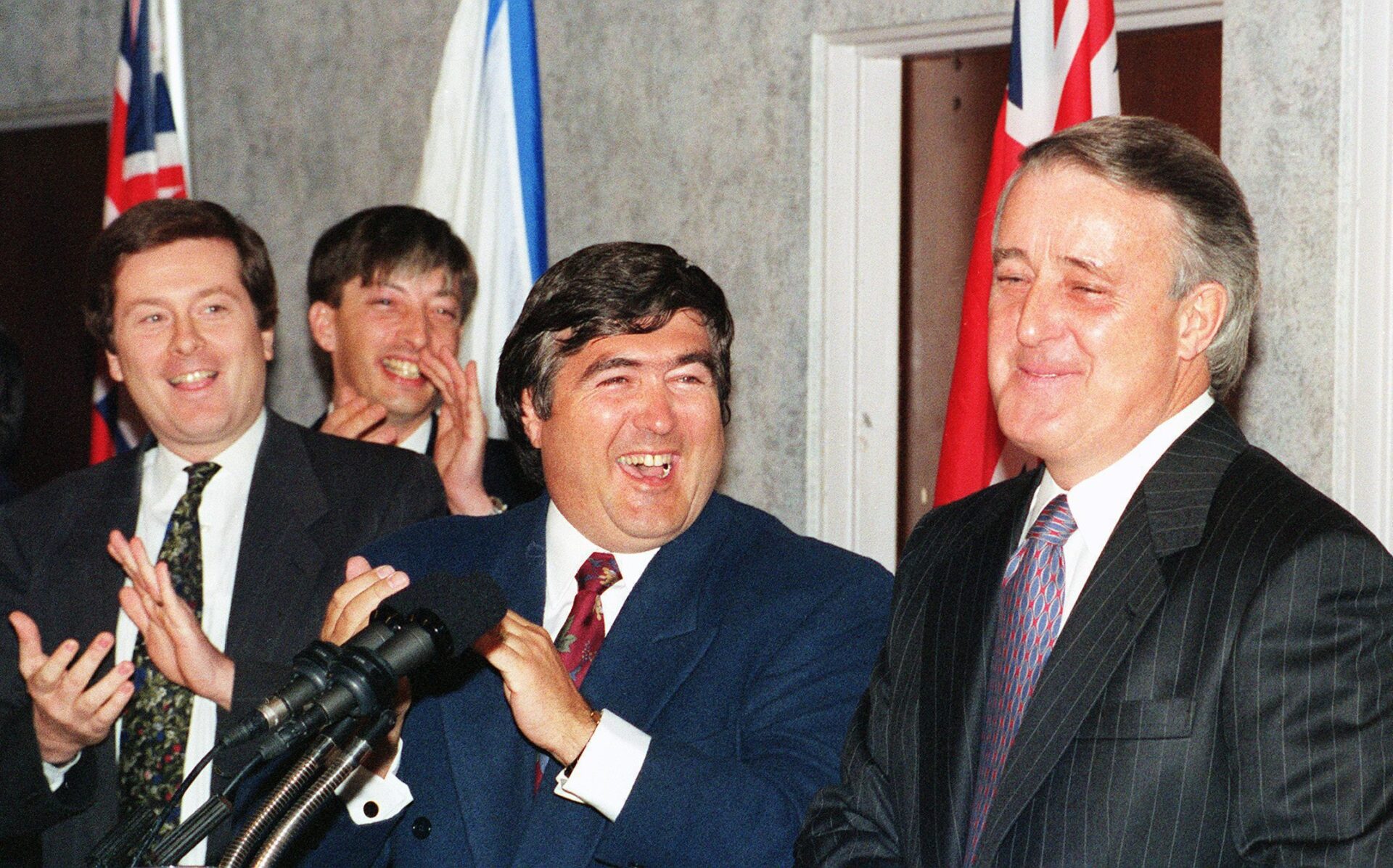
“There was an excitement”
He left a mark on public servants as a strong leader who sought big and new ideas to transform Canada for the future, said Bourgon. That was like catnip for policy-makers who joined the public service for meaningful work and to make a difference.
“There was an excitement. It wasn’t all doom and gloom,” Bourgon said.
“Public servants were proud to be associated with projects under such leadership. Like shooting above your weight, doing things not done before, bringing your best ideas and making them happen.
Years later, Mulroney said his “pink slips and running shoes” comment had been aimed at getting public servants ready for big changes.
“I was simply indicating there was a new sheriff in town and that we will be doing things differently, but that didn’t indicate any disrespect for the public service,” he said.
But Mulroney acknowledged a lot of distrust and suspicion in the early days. Public servants had developed a cozy relationship with the ruling party after 26 years of Liberal governance. Some felt ideologically opposed to what he wanted to do.
That’s partly why Mulroney introduced chief-of-staff positions – starting in the PMO – giving the job more influence and salary as key political advisors.
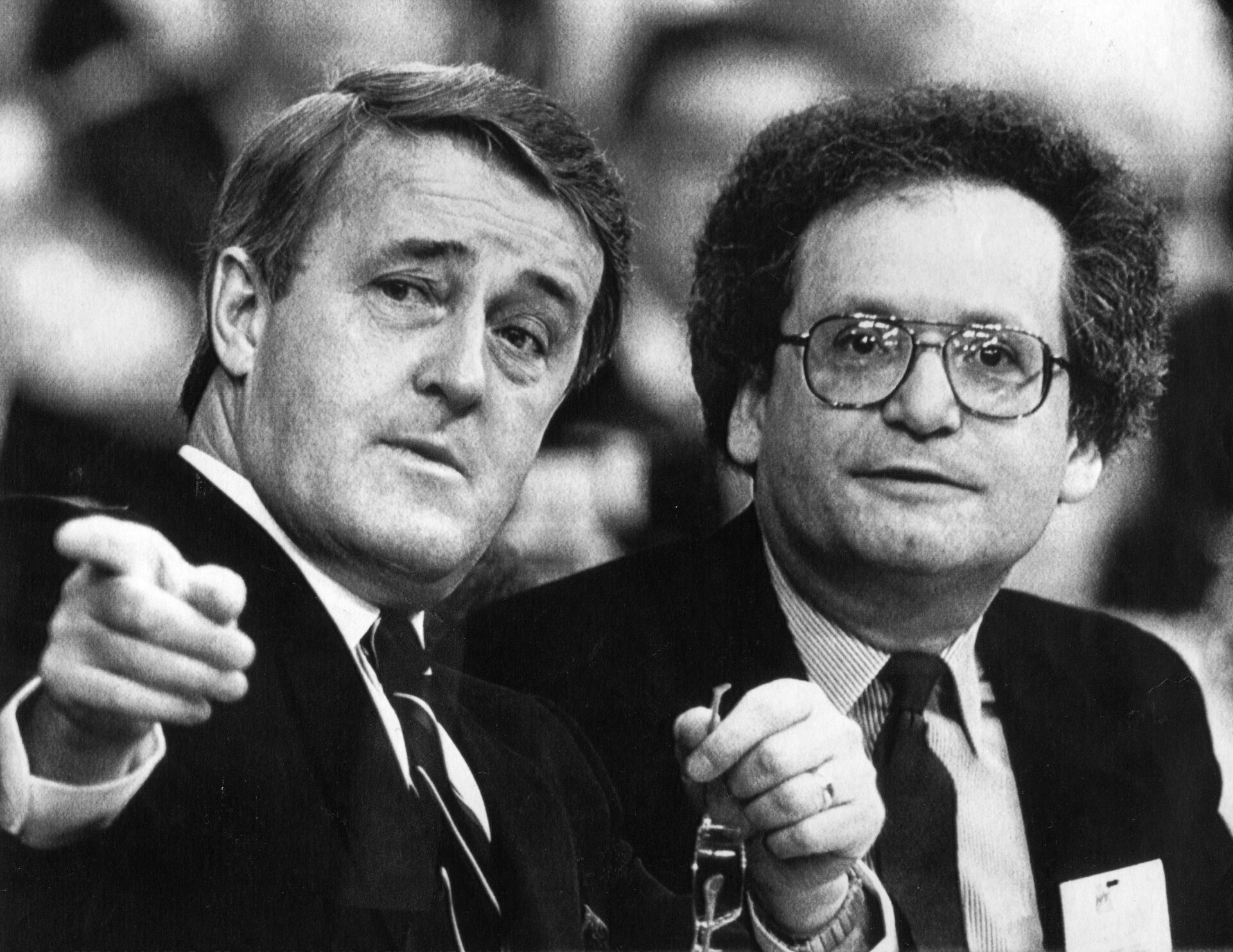
Deputies and their ministers
In that same interview, Mulroney said he came to trust and lean on public servants, even poaching some for his PMO, like Derek Burney as his chief of staff. He picked Paul Tellier, then deputy minister of energy, mines and resources, as clerk and top bureaucrat, saying he set the gold standard for straight goods and unvarnished truth.
And without public servants “we wouldn’t have got our major agenda through,” Mulroney said. (Today, public policy and governance are at the forefront of the Brian Mulroney Institute of Government at St. Francis Xavier University.)
In a recent interview, Tellier said Mulroney quickly saw the importance of the public service, particularly the lynchpin relationship between deputy ministers and their ministers.
But Tellier argues that trust is under huge strain today because of an all-powerful PMO and army of ministerial staff, and nowhere is it more evident than Prime Minister Justin Trudeau’s relationship with the public service.
“Trudeau never understood what the relationship should be, and if he stays there much longer he’s going to completely destroy the professional public service we have,” said Tellier.
Brian Mulroney and the stealth privatization of the state
Brian Mulroney courted MP loyalty like no other prime minister
From 2003: The Mulroney years: Transformation and tumult
From 2011: Leveraging Canada-US relations “to get big things done” (interview)
From 2012: Acid rain: A case study in Canada-US relations (written by Brian Mulroney)
The centralization of power and the shift of public servants from fearless advisers to loyal implementers is a continuum of the past 50 years, and some argue Mulroney’s reforms helped accelerate that shift.
Mulroney introduced two big reform exercises that continue to serve as reference points today even though their overall impact was limited.
The day he was elected he announced the task force on program review, headed by deputy prime minister Erik Nielsen. It enlisted private-sector experts to apply a business-lens on more than 1,000 programs for savings and efficiencies.
The 1986 report identified cuts up to $8 billion. In the end, about $500 million was booked in savings.
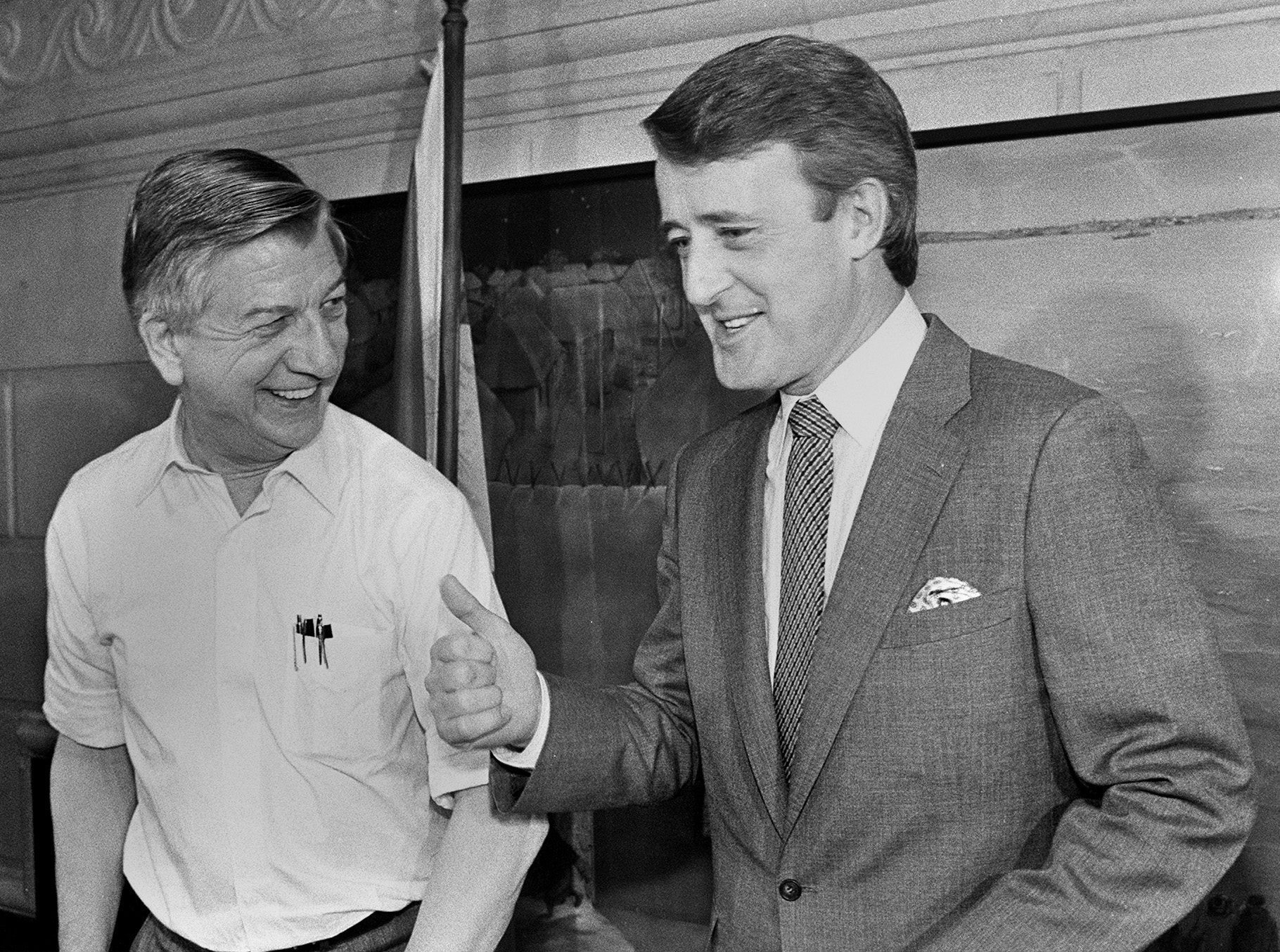
With his second term, came PS 2000, a high-profile reform of the public service many consider disappointing. It aimed to improve the way public servants were managed. It stood apart from previous reforms because it was an internal review, led by Tellier, and it put a strong emphasis on service delivery.
Ten task forces wrestled with issues still dogging public servants today – an outdated human-resources regime, excessive rules and bureaucratic layers, and an aversion to risk.
PS 2000 faced employee backlash amid already hostile labour relations after years of cuts and wage freezes that peaked with a 1991 strike, then the largest in Canada’s history. Its timing, post-strike, couldn’t have been worse as public servants faced another budget cut.
Many say Mulroney had too much on his plate and didn’t have the political attention for public-service reform.
“The bigger issues at the time were free trade, GST, constitutional reform. And Mulroney understood better than most prime ministers that … when you have political capital, you should spend it on the cause of your priorities,” said Senator Harder.
But Evert Lindquist, a professor of public administration at University of Victoria, argues Mulroney was eventually ready to up the ante on public service reform. In 1992, he let then-Treasury Board secretary Robert de Cotret assemble a small task force to design a smaller cabinet and reorganize government. (With 40 ministers Mulroney’s cabinet was the largest in history.)
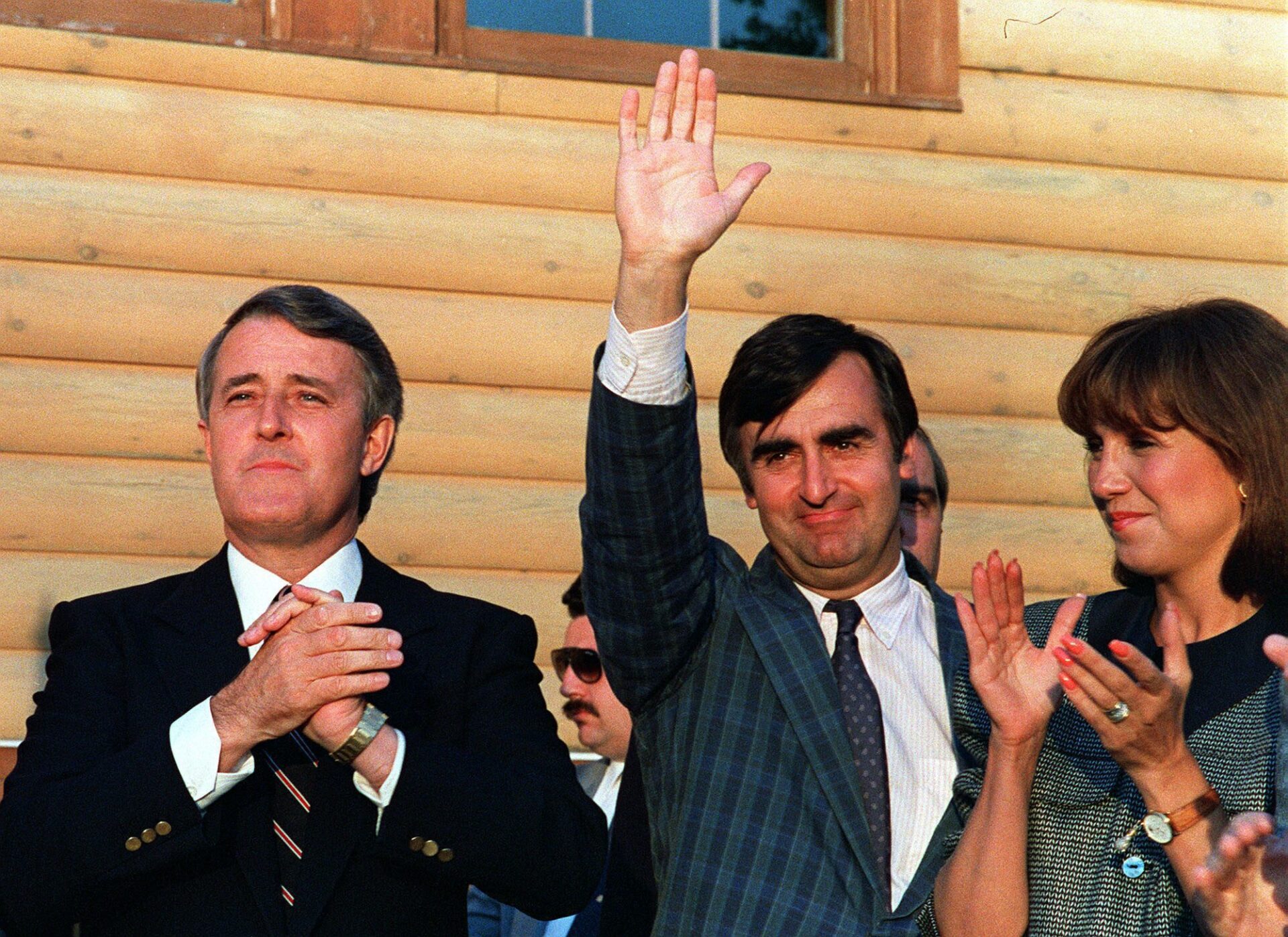
The “nuclear bomb” of reorganization
The whole exercise was closely guarded. It led to the massive and tumultuous 1993 reorganization of departments, which one official called the “nuclear bomb” of reorganization. Lindquist said the reorganization was the first step of a plan that also called for a program review.
Mulroney never approved the plan. With falling popularity, he resigned and Kim Campbell, the next prime minister, took up the reorganization, reducing 35 departments to 23. Some departments merged, some were eliminated and new ones created, including Canadian Heritage, Health and Public Security.
Bourgon said the public service learned valuable fiscal management lessons during the Mulroney years that informed the Liberals’ program review, chiefly that across-the-board cuts don’t work.
Such cuts can backfire with perverse effects, she said, including demoralizing workers, lowering the quality of service and eroding public trust.
But the key lesson is: big change needs political leadership and it’s the responsibility of elected officials to decide the role of government and what programs it offers.
“We learned if you’re going to deal with a sizable deficit, you cannot cut your way through with 1,000 cuts. There is no alternative to making choices. That was a profound lesson,” Bourgon said.
“So, it’s a political exercise. And it took us, the public service, two mandates and a half before we figured that out.”




